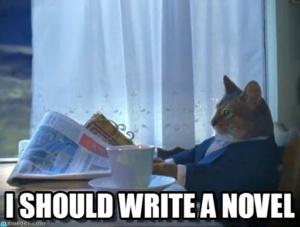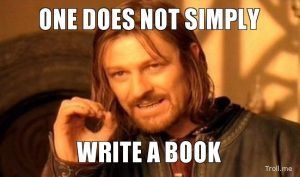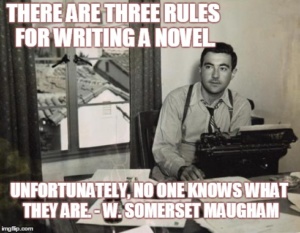The Short Story Writer’s Dilemma – How to Write a Novel
 So I posed a question to the Queer Sci Fi authors group concerning how a short story writer goes about penning a novel. I received eye-opening and useful answers, so I thought I’d share them here:
So I posed a question to the Queer Sci Fi authors group concerning how a short story writer goes about penning a novel. I received eye-opening and useful answers, so I thought I’d share them here:
Regarding plot, writer Angel Martinez pointed out that “A short story is about a single issue that needs to be resolved. A novella is about an issue resolved in a straight line. A novel is about a journey and all the things you see and learn and solve along the way… You need a conflict that has multiple pieces to it, with multiple points where the characters need to make choices.” Mary Anne Hinkle agreed, urging writers to look “for more conflict, both in the world and in the characters.” And Meghan Maslow added, “The thing to remember with novels is that you have the space to explore issues that you only hint at in a short story.” Kelley York summed this up by saying, “Subplots, I think. When I write shorter (short stories or novellas), there’s a lot less in there in terms of subplots and character arcs. Short stories tend to have one problem and one goal in mind, from what I’ve seen, whereas a full 80,000-word novel may have characters arcs not just for the MC, but several side-characters, as well.”
 Many of the writers like Kristen Stevens swear by outlining. Kristen outlines novels so they consistently finish at 40 chapters of 1500-2500 words each. Some authors instead write scenes they want in the book and then flesh them out completely with description, worldbuilding, and character interaction. Others like Brad Townsend (and rumor has it, Douglas Adams) will write their characters into a box and then have to write them back out again, the act of puzzling out of the situation taking up more pages than a linear tale.
Many of the writers like Kristen Stevens swear by outlining. Kristen outlines novels so they consistently finish at 40 chapters of 1500-2500 words each. Some authors instead write scenes they want in the book and then flesh them out completely with description, worldbuilding, and character interaction. Others like Brad Townsend (and rumor has it, Douglas Adams) will write their characters into a box and then have to write them back out again, the act of puzzling out of the situation taking up more pages than a linear tale.
Writer Tinnean T’Leyte swears by conversations: “When your characters start talking—whether to each other or to other people or even themselves, someone is going to respond, and that can help you advance the story and the word count. I wrote a book where the MC’s phone rang. I had no clue why, but the resulting conversation explained it all: a friend had been kidnapped, and his partner called for help.”
 On characters Alex Beecroft urged, “Add a new character and then you have to think of something for them to do, and that increases the length and the complexity of the story.” Siri Paulson was a font of knowledge, stating that “Your character arc will have a lot more steps. Ditto for the relationship arc between your two main characters. You’ll need more secondary characters. And your worldbuilding won’t just hint but explore the ramifications or backstory or details of the world you’ve set up.”
On characters Alex Beecroft urged, “Add a new character and then you have to think of something for them to do, and that increases the length and the complexity of the story.” Siri Paulson was a font of knowledge, stating that “Your character arc will have a lot more steps. Ditto for the relationship arc between your two main characters. You’ll need more secondary characters. And your worldbuilding won’t just hint but explore the ramifications or backstory or details of the world you’ve set up.”
Both Siri Paulson, K.I. Whitestar, and Dusk Peterson mentioned approaching a novel like a series of short stories. Each subplot should have its own beginning, middle and end, but be woven into a larger narrative.
As C.B. Lewis summed up, “I suspect the key is practice, plus giving yourself a story that needs to be big enough for the word count. Look at the story you have and consider if any of the scenes can be expanded in a way that adds something, be it character development, a plot twist, backstory or whatever.”
So there are my takeaways from the conversation. Do you have any hints or tips for writing the “longer form”, a.k.a. the novel?
